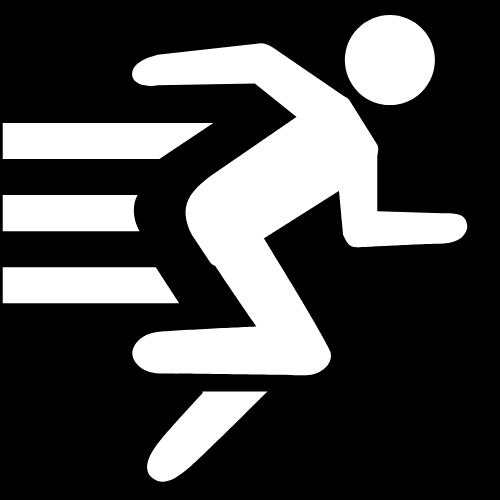The frequency of the course is determined by the amount of exercise. When I’m training or competing in lengthy races, I start with an inhale for three strides and an exhale for four. However, this quickly shifts to inhale for two seconds and exhale for three seconds.
I like these odd-totaled cycles, and I tend to keep them going unless I am really pushing myself. Then it inhales for two breaths and exhales for two breaths. I’ve gone a little crazy, going in for one, out for two, or in for three. But that’s when I’m at my most exhausted, practically anaerobic.
Take deep breaths through your mouth and nose. Air is essential for every kind of activity, and you need enough of it when working. Take deep abdominal breaths while keeping your lips parted. That is something you do not have to consider. Your breathing pattern will be determined by your oxygen need.
I do, however, advise folks to consider how they may extend their bellies out while taking a breath via an air intake. This assists you in gaining muscle for breathing (yes, breathing requires muscle, which accounts for a portion of your oxygen absorption).
When you get too lengthy runs, it actually helps to avoid stitches, and if you do acquire a stitch, you may breathe in and force your belly out while holding your breath for a few strides to eliminate the stitch.
Don’t obsess over the details of your breathing or stride. Each of us has a preferred method of running. That kind of activity assists you in maintaining equilibrium in your body. To demonstrate their point, some folks may swing one arm wide. They are adjusting to another movement in their body without even realizing it. As you get farther and further, you will learn to smooth down your stride and run more effectively.
I have varied running patterns depending on where I am. The tempo of my breathing rises as my speed increases. When I take a deep breath out, I like to count my steps. As my speed increases, the count becomes shorter and shorter.
After a few years, you can even tell how much effort you’re putting in by the cadence of your breathing. A newbie should just run and strive to maintain as much comfort and efficiency as possible while doing so. You will discover what is most beneficial for you.
First and foremost, your body must be in a state that allows it to do this function in the first place. This needs a lot of practice. So there will be a lot of running! It doesn’t matter how good your technique is if your body is incapable of handling it.
However, you want to make sure that you are breathing properly throughout that exercise. So, what exactly is the technique? Patterns. A pattern that works for one person may not work for another person. It is dependent on the individual and how quickly they are running.
However, it took me two steps to take a breath in and two steps to take a breath out. It takes a lot of practice to find exactly how much air you should be breathing while doing this. Everyone is unique in their own way.
I’d take it easy for a while. You should be inhaling appropriately all of the time – you should not alter your breathing method because you are fatigued.
The majority of folks take two or three breaths in for each out, as well as on the foot strike. Breathe correctly before your heart rate begins to rise, and calm down before your heart rate begins to soar.
The only exception is if you are competing and, for example, you are running up a hill. As a result, you are taking a chance. I’ve found that if my heart rate becomes too high after a hill, I can usually get it back under control by just choosing a slower speed after the hill.
Body adaptations occur when the body is subjected to just enough stress to induce progress but not enough stress to cause permanent harm to the muscles and energy systems during training. Doing the thing that you want to improve at is the most effective approach to becoming better at that activity.
The reason for encouraging one to jog rather than run is as follows: Inexperienced runners may attempt to go faster than their bodies are capable of sustaining. Not only does it harm one’s physical health, but it also has a negative impact on one’s motivation.
Find the sweet spot of covering as much territory as you can realistically do, and your lungs, capillaries, and muscles will flourish as a result of the exercise you get. This is how a runner should time their breathing.








